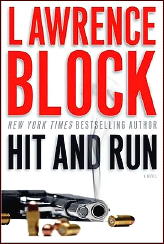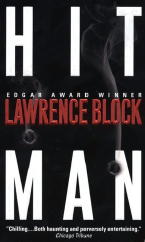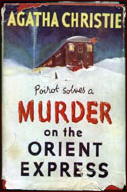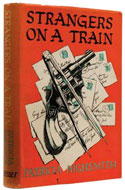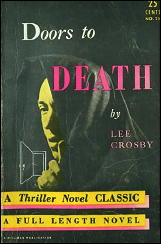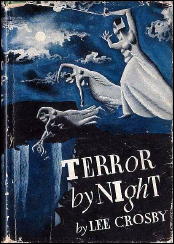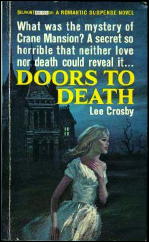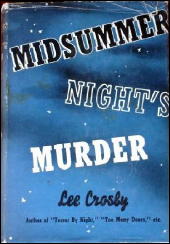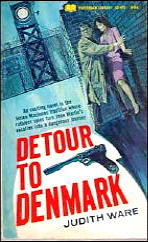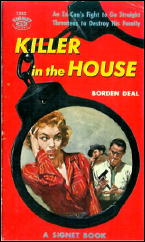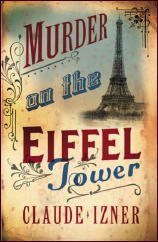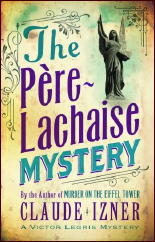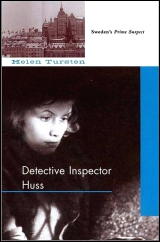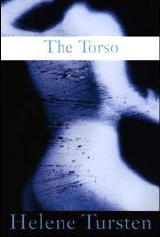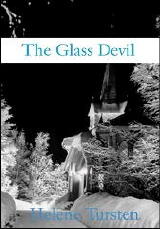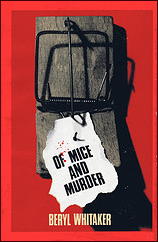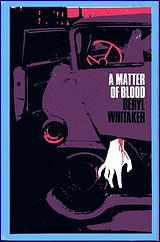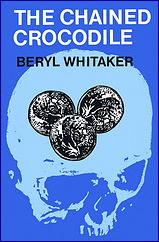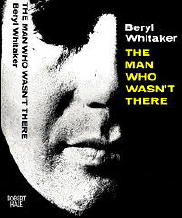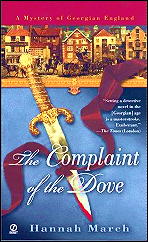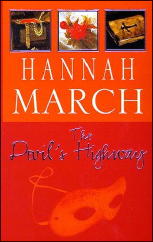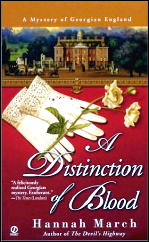Steve,
Here’s another “Man On The Run” question: I recently watched Odd Man Out with James Mason and could you or David recommend any other urban-type MOTR films? Whether they be wartime, comedic or western doesn’t matter much.
I am interested in a city atmosphere. I imagine Escape from New York would be one although that is a little too sci-fi for my tastes. Anything at all that comes to mind would be of enormous assistance to me.
Best,
Josh
— —
This is, of course, a follow-up to David Vineyard’s four Top Ten lists of “Man on the Run” thrillers posted here about three weeks ago. Naturally I tossed the question on to him, graciously offering to let him tackle it. Here’s his reply:
Hmm, urban man on the run films — there are quite a few of those, so I’ll limit myself a bit. Obviously Odd Man Out is an excellent choice, but here are a few more. Just to keep from going too far astray I’ll stick to ones where the protagonist is on the run in an urban setting rather than what I call ‘hunt the man down’ films like Panic in the City or M which feature classic manhunts.
These are in no particular order, and vary as to genre (spy, crime, etc.). I’ll also leave off films like Desperate Hours and He Ran All The Way where the bad guy hides out in a home in an urban setting, that’s a genre to itself. Not included, but worth checking out, is The Lost Man with Sidney Poitier, a reworking of Odd Man Out set in the ghetto. Not really a success, but worth seeing. Others:
This Gun For Hire. (Based on Graham Greene’s novel.) Alan Ladd, Veronica Lake, Robert Preston, Laird Cregar. Remade as Short Cut To Hell, directed by James Cagney and as a television movie with Robert Wagner. Stick to the original.
Street of Chance . (Based on Cornell Woolrich’s Black Curtain). Burgess Meredith, Claire Trevor. Amnesiac is hunted as he tries to regain his memory. Also an episode of The Alfred Hitchcock Hour (reviewed here ) with Richard Basehart.
Dark Corner. (Novel by Leo Q. Ross — Leo Rosten.) Mark Stevens, Lucille Ball, William Bendix, Clifton Webb. Private eye Stevens gets help from secretary Lucy when he is set up for murder — great noir film with outstanding performances by all — especially Webb and Bendix.
The Fugitive. Harrison Ford, Tommy Lee Jones This made the first list due to the train wreck and the dam escape in the first part of the film, but much of the action takes place in Chicago making good use of the urban setting and that city in particular.
A Man Alone. Ray Milland. Noirish little western directed by Milland about a fugitive trying to clear himself of a murder in a small town. Perhaps not gritty or urban exactly but tense and claustrophobic. His The Thief set in New York is also worth checking, done with sound, but no dialogue.
The Confidential Agent. (Novel by Graham Greene.) Charles Boyer, Lauren Bacall, George Colouris. Boyer is in London to get help for his cause (Republican Spain in the novel) surrounded by enemies and Fascist agents, falling for Bacall who aides him.
Night and the City. (Based on the novel by Gerald Kersh.) Richard Widmark, Gene Tierney. Great film as Widmark’s wrestling promoter tries to avoid the fixers he has double-crossed in London. Skip the remake with Robert De Niro.
Whistling in Brooklyn. Red Skelton, Ann Rutherford Third film of Red’s series of films about radio sleuth the Fox has him on the run from crooks and cops in Brooklyn including a hilarious turn as a bearded baseball player with the real Brooklyn Dodgers. Probably not what you are looking for, but entertaining.
The Sleeping City. Richard Conte. Once controversial film finds undercover cop Conte in big city hospital ferreting out corruption and with every hand against him.
Twelve Crowded Hours. Richard Dix, Lucille Ball Offbeat and entertaining B of reporter and girl racing to clear an innocent man.
Dr. Broadway. MacDonald Carey Early Anthony Mann film and part of a proposed series that never developed has young doctor getting involved with gangsters and finding himself hunted by crooks and cops. Based on the pulp stories of Borden Chase.
Somewhere in the Night. John Hodiak, Lloyd Nolan A war hero with amnesia returns to his home town where he was a less than honest private eye and finds himself pursued by everyone.
D.O.A. Edmond O’Brien One of the greats. O’Brien is hunting down the man who poisoned him, but at the same time he is literally on the run from death as his time runs out.
Slayground. (Based on the Richard Stark novel.) Peter Coyote is Parker hunted in an amusement park.
Side Street. Farley Granger Part time postman Granger steals some money and finds himself hunted on all sides. Beautiful use of location work in NYC, expertly directed by Anthony Mann. Great car chase finale in a careening taxi.
My Favorite Brunette. Bob Hope, Dorothy Lamour, Peter Lorre, Lon Chaney Jr. Early spoof of film noir staples (1947, yet they hit them all) as baby photographer Bob is mistaken for private eye Alan Ladd and finds himself hunted by the crooks who want heiress Lamour’s money and the cops who think he is a murderer.
The Web. Edmond O’Brien, William Bendix, Vincent Price. Bodyguard O’Brien gets framed by boss Price in good noir mystery.
Take One False Step. William Powell, Shelly Winters Powell gets involved with Winters and wanted by the police in entertaining tale with script by Irwin Shaw based on his own story.
Dark Passage. (Novel by David Goodis.) Humphrey Bogart, Lauren Bacall. Bogie is an innocent man who escapes prison, Lauren always believed he was innocent and helps him hide out, get plastic surgery, and catch the real killer. Extensive use of the subjective camera from the hero’s point of view for the first half of the film (until Bogart emerges after the plastic surgery).
The Big Clock. (Novel by Kenneth Fearing.) Ray Milland, Charles Laughton, Maureen O’Sullvan Editor at Time-like magazine conglomerate is framed for murder of the publisher’s mistress and ends up hunting himself in the claustrophobic building where he works. Remade as No Way Out and ‘borrowed’ countless times.
Ride the Pink Horse. (Novel by Dorothy B. Hughes.) Robert Montgomery, Thomas Gomez. Tough guy out for revenge and blackmail of vacationing gangster in New Mexico tries to elude killers and police during carnival. One of the greats of film noir. Remade for television as The Hanging Man with Robert Culp.
Mirage. (Based on the novel by Howard Fast.) Gregory Peck, Walter Matthau. Amnesiac loses his memory (or regains it partially) in a blackout and is hunted as he tries to piece his story back together by his former associates.
Arabesque. (Novel by Gordon Cotler.) Gregory Peck, Sophia Loren. While evading spies and assassins Peck and Loren try to put together puzzle involving a threat to a visiting Arab prince in largely comic caper from Stanley Donen (Charade).
Nowhere to Go. (Novel: Donald MacKenzie.) George Nader, Maggie Smith. A thief in London tries to evade police and fellow crooks in this excellent sleeper with notable jazz score by Dizzy Reece.
The Limping Man. Lloyd Bridges. Man finds himself on the run in London from a false charge.
Interrupted Journey. Richard Todd. Man on the run with another woman in suspenseful film — until the end.
Captive City. John Forsythe. Small town newspaper editor finds himself a fugitive in his own town in well done noir film based on a true story.
It Takes All Kinds. Robert Lansing, Vera Miles. Lansing accidentally kills a sailor and Miles hides him out.
The Whistler. (Based on the radio series.) Richard Dix. Solid entry to the B-series in which a man tries to cancel the contract he took out on his life when he thought he was dying.
Rampage. (Novel: Allan Calliou.) Robert Mitchum, Elsa Martinelli, Jack Hawkins. Mitchum and Martinelli find themselves hunting a killer leopard Hawkins has set free in Munich while Hawkins hunts them.
Arch of Triumph. (Novel: Erich Maria Remarque.) Charles Boyer, Ingrid Bergman. Paris on the eve of the Fall with refugees desperate to escape.
Saboteur. Robert Cummings. The second half of the film has innocent Cummings on the run in New York trying to stop the spies and clear his name including the famous Hitchcock shootout in the movie theater, the ship sinking (based on the suspected sabotage of the Normandie), and the finale atop the Statue of Liberty with assassin Norman Lloyd. And if you can call Monte Carlo urban or gritty, To Catch a Thief.
Cairo. Richard Johnson, George Sanders More or less a remake of The Asphalt Jungle but with a bit more of the urban man on the run theme for Johnson’s half breed character at the end.
Bedeviled . Anne Baxter, Steve Forrest. Seminary student Forrest helps Baxter when she is witness to a murder.
Christmas Holiday. (Novel by W. Somerset Maugham.) Gene Kelly, Deanna Durbin. Durbin tries to hide and protect her sociopathic killer hubby Kelly, directed by noir great Robert Siodmak. Kelly is good in unsympathetic role.
All Through The Night. Humphrey Bogart, Conrad Veidt, William Demarest, Judith Anderson. Bogie is a Runyonesque gambler who is framed for murder of Edward Brophy when he stumbles on a ring of fifth columnists. Genuinely funny film with a great cast including Jackie Gleason, Frank McHugh and Phil Silvers. Watch for the scene where Bogie and Demarest double talk a room full of Nazi saboteurs. Great looking film too with serial-like action and sharp script.
I Wake Up Screaming. (Novel: Steve Fisher.) Victor Mature, Betty Grable, Laird Cregar. PR man Mature is framed for murder and on the run in glitzy New York in this noir classic. Remade as Vicki with Jeane Crain, Eliot Reed, and Richard Boone.
Man Hunt. (Based on the novel Rogue Male by Geoffrey Household.) Walter Pidgeon, Joan Bennett, George Sanders. While this Fritz Lang film is a classic of the man hunted in rough country, the scenes in London with Pidgeon shadowed by Nazi agents and his deadly battle with killer John Carradine in the underground are fine examples of the chase film done in an urban setting. Those aspects are largely missing from the well made Rogue Male with Peter O’Toole. Lang recreates the subway setting in his serial killer manhunt film While The City Sleeps.
The Quiller Memorandum. (Novel: Adam Hall — Elleston Trevor.) George Segal, Alec Guiness, Max Von Sydow. Segal’s Quiller finds himself on the run in West Berlin in well done spy film with a screenplay by Harold Pinter.
27th Day . (Novel by John Mantley.) Gene Barry. Preachy but entertaining sf film of group of people from different nations hunted by everyone when aliens give them the power to destroy the world and twenty-seven days to decide whether to use the power.
Ministry of Fear. (Novel: Graham Greene.) Ray Milland, Dan Duryea. Fritz Lang film of amnesiac Milland framed and on the run and the hunt for a spy ring in wartime London. Atmospheric.
The Game. Michael Douglas, Sean Penn. Doesn’t really hold up, plus it’s mean-spirited, but Douglas finds his life turned upside down when his brother gives him an unusual birthday present
Kiss the Blood Off My Hands. (Novel: Gerald Butler.) Burt Lancaster, Joan Fontaine. Ex-POW accused of murder hiding out in London in noirsh film.
The Killers. (Story by Ernest Hemingway.) Burt Lancaster, Ava Gardner, Edmond O’Brien Insurance investigator O’Brien unravels the story of Swede (Lancaster) a one-time boxer who got involved with crooks who he double crossed and then was hunted down and killed by. Hemingway’s favorite film of his work though only the first few minutes of the film actually recreate the story. William Conrad and Charles McGraw memorable as the killers. Ava Gardner just plain memorable. Remade by Don Siegel with Ronald Reagan (his last film and only villain), Angie Dickinson, Lee Marvin, and John Cassavettes.
Enemy At the Gates. Joseph Fiennes, Jude Law, Ed Harris. Semi-fit of the theme as Russian sharpshooter Fiennes and German sharpshooter Harris hunt each other in the devastation of the battle of Stalingrad.
Five Fingers. James Mason, Michael Rennie. Valet turned spy in WWII Istanbul must evade British and German agents when he is revealed. Based on a true story if not the true story.
Behold a Pale Horse. (Based on the novel Killing a Mouse on Sunday by Emeric Pressberger.) Gregory Peck, Omar Sharif, Anthony Quinn. Again a mix of rough country and city chase. Legendary gunman Peck returns to Franco’s Spain to assassinate brutal Fascist police chief Quinn and becomes object of a manhunt.
The Paris Express. (Based The Man Who Watched the Trains Go By by Georges Simenon.) Claude Rains. Meek embezzler finds himself hunted for more than he expected.
And since we started with James Mason and Carol Reed we’ll end with James Mason and Carol Reed:
The Man Between. James Mason, Claire Bloom. In post-war Berlin black marketeer Mason falls for Bloom and finds himself torn between East and West and hunted by both.
But for this list more than the others I think we can count on numerous additions.
— David
